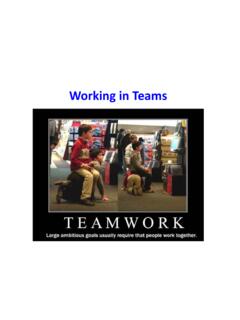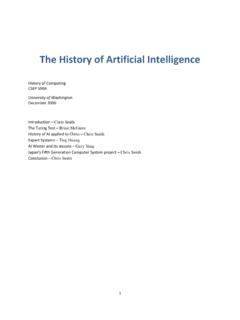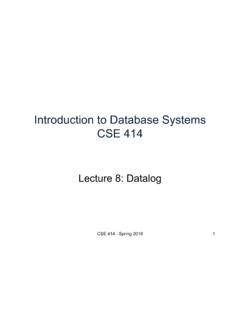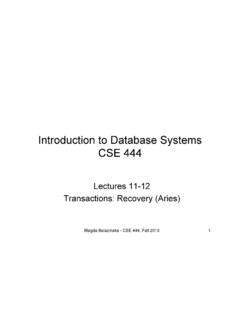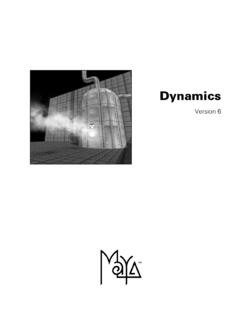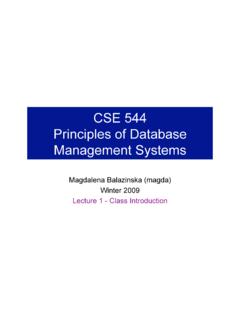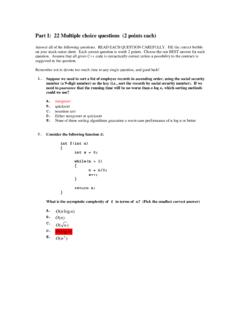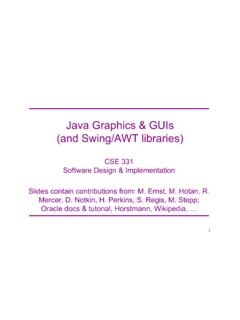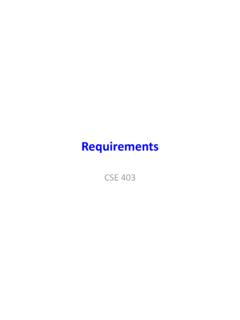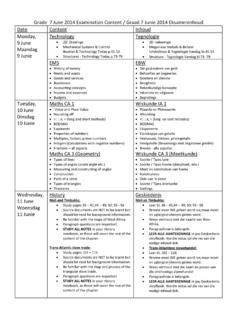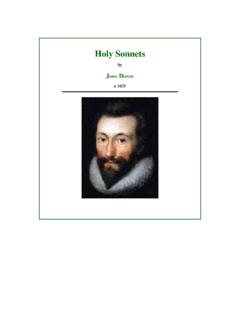Transcription of CSE 599d - Quantum Computing The No-Cloning Theorem ...
1 CSE 599d - Quantum ComputingThe No-Cloning Theorem , classical teleportation and Quantum teleportation , superdense CodingDave BaconDepartment of Computer Science & Engineering, University of WashingtonI. THE No-Cloning THEOREMC loning has been in the news a lot lately. But today we are not going to talk aboutthattype of cloning, but insteadof a process of duplicating Quantum information. That we are not talking about cloning DNA (for our results willnot be positive) is rather fortunate for the Raelians!The No-Cloning Theorem is one of the earlier results in the study of Quantum information. It has an interestinghistory, some of which is written down in a paper by Asher Peres, How the No-Cloning Theorem Got Its Name whichis available online is generally attributed to Wootters, Zurek, andDieks in 1982.
2 (When I was an undergraduate at Caltech, they had an automated system for requesting copies ofarticles when you were searching their publication database. I discovered, probably around my junior year, the papersof William Wootters, promptly ordered the automated system to print outeverypaper Wootters had ever written atthat time and my life hasn t been the same ever since! Wootters thesis is, in my opinion, one of the most interestingresutls I ve ever encountered.) So what is the No-Cloning Theorem ?Suppose that we have in our lab a qubit in an unknown Quantum state| = |0 + |1 . Actually it is perhapsbetter to say that some external referee knows a description of this Quantum state, but we in the lab don t know thisquantum state.
3 Now we can construct all sort of machines (unitaries and measurements) which act on this qubit. Thequestion posed in the No-Cloning Theorem is whether it is possible to design a machine which, for all possible actualstates| , is able to take this state| and create two copies of this state| | , hence cloning the s prove a simple version of the No-Cloning Theorem . We want to show in this version that there is no unitaryoperation which can enact the evolution| |0 | | for all possible states| . To see this, suppose thatthere exists such a unitary. Then it must be able to clone|0 and|1 :U|0 |0 =|0 |0 andU|1 |0 =|1 |1 Then if this is true, by the linearity of Quantum theory,U1 2(|0 +|1 ) |0 =1 2(|0 |0 +|1 |1 ) which is notequal to1 2(|0 +|1 ) 1 2(|0 +|1 ) which is what we would require if this were a cloning unitary.
4 Thus we have acontradiction: no such unitary can ve shown the No-Cloning Theorem for qubits and for just unitary transformations. In fact there is a more generalversion of this Theorem , called the no-broadcasting Theorem which deals with an even more general situation. Sufficeit to say, in all of these formulations a Quantum machine which canperfectlyclone all Quantum states is shown to notbe constructible. An interesting question which we won t talk about too much, but which has led to a lot of very niceresults is what aboutimperfect cloning machines?Finally it is interesting to ask how Quantum the No-Cloning Theorem is. What about if we return to our classical prob-abilistic information processing device.
5 Suppose we have a classical system of two configurations with the probabilitydistribution [p1 p]T]. Is it possible to turn this into two copies of the probability distribution [p1 p]T [p1 p]Tfor all possible probabilitiesp? At first you might think: of course we can do this: we just copy the bits! But if wetake [p1 p]T [1 0] and copy the first bit to the second, this produces the probability distribution [p0 0 1 p]T. Thisis not the same as the probability distribution [p1 p]T [p1 p]T. In fact one can see that if we allow stochasticevolutions, then by the same argument we used in the Quantum case, there is no classical machine which can clonethe probability latter example is one of the important points I want to make about doing Quantum information science.
6 Itis important to always challenge ourselves to distinguish the difference between classical and Quantum informationprocessing machines. And it is important in these comparisons to not compare deterministic classical informationprocessing machines (ones in which the probabilities are always unity) to Quantum machines, but to compare proba-bilistic information processing devices. This doesn t mean that comparing to deterministic machines isn t important:it s just that it is often misleading. This is not to say that the Quantum No-Cloning Theorem isn t somehow differentthat the classical No-Cloning Theorem . The Quantum No-Cloning Theorem actually results in results which have noclassical we are using the Quantum properties of the TELEPORTATIONIf there could be teleportation , or teleportage, or whatever it Science fiction writer J.
7 Wyndham, 1951 When a reporter asked Asher if Quantum teleportation could teleport the soul as well as the body, Asheranswered, characteristically, No, not the body, just the soul. - Obituary for Asher Peres, Physics Today, August 2005 Most of us first encounter teleportation when Captain Kirk and Spock decide to make a trip down to the surface ofa planet. This form of teleportation is a method to magically transmit people or objects from one location to this works is only known to television producers and Scotty. In this lecture we will talk about a different sort ofteleportation. In fact we will talk about two types of teleportation , classical teleportation and Quantum something teleportation makes it sound really cool and mysterious, but in this class you will find that whilequantum teleportation is certainly very interesting, it is not as surprising as you might initially have expected.
8 Thisis because there is a protocol in the classical world, the world of our probabilistic information processing device,which is very much in the same spirit of teleportation . We call this protocol classical teleportation and actually mostof you have actually encountered this protocol before! Once we have talked about classical teleportation , I will usethe classical teleportation to derive Quantum teleportation . This derivation follows along with a very nice articlewritten by David Mermin ( From classical State-swapping to Quantum teleportation , Phys. Rev. A 65, 012320(2002); quant-ph/0105117.)Suppose that I have in my laboratory a qubit. I don t know the state of this qubit, just that it is in some quantumstate (some external referee may know what this Quantum state is.)
9 Now you live a few blocks away from me and Iwant to give my qubit to you such that this qubit is in the same state as it is in my lab. Well one thing I could do isthat I could pack up the qubit in a bag (only theorists can do this) and take the qubit over to your house. Then youwill have my qubit. But of course this is kind of a pain. For one thing, moving qubits around is not very easy to do(that bag I used is not easily constructible) and further it often happens that in moving the qubit from one locationto another the qubit will lose its Quantum nature (we ll learn more about this problem when we study Quantum errorcorrection.) So one thing I could ask is whether it is possible for me to pick up the phone and call you and tellyou some classical information which will alow you to construct a qubit just like mine at your home.
10 Now from theno-cloning Theorem , we know that there is no way to take an arbitrary qubit| and clone it| | . Thus thereis no way for me to get you a copy of my qubit without, in some way, disturbing my qubit. Now the goal is for me tojust send you classical information. If I just perform unitary measurements on my Quantum state and some ancilla,this doesn t really do anything to disturb the Quantum information: it s just rotated into some new basis. Thus theonly way for it to be possible for me to send the qubit using this classical channel is for me to perform measurementswhich involve my qubit. But now we have a bit of a paradox: such a measurement will reveal some information aboutthe qubit ( some information about the amplitudes and.)
